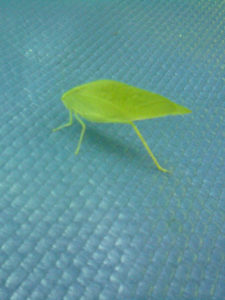the yoga diet

Many yogis are obsessed with their diets. It stands to reason. We are pressured to look a certain way, and the majority of food on offer is not only fattening and unhealthy, but not really even food. There is a multi-billion dollar industry that banks on telling us how to eat for health, though that is usually a marketing euphemism for thin. So, figuring out what is actually good for you can be difficult.
 We are neurotic about what we eat. This is why I don’t have much to say about yoga and diet. Eat what you want. If you really pay attention to what that is, after a few chocolate croissants you will likely discover that you want food. Real food. Michael Pollan
We are neurotic about what we eat. This is why I don’t have much to say about yoga and diet. Eat what you want. If you really pay attention to what that is, after a few chocolate croissants you will likely discover that you want food. Real food. Michael Pollan has a number of rules around this idea (indeed, a whole book
). Those of most interest to me are (paraphrased):
- Don’t eat food your great grandparents wouldn’t recognize. My addendum: unless it’s from a different culture.
- Don’t eat food products with more than five ingredients.
- Don’t eat foods with ingredients you cannot pronounce.
- Eat as simply and locally as possible.
That’s it. That’s all you need. “But what about the traditional yogic diet?” you cry! Yes, it’s vegetarian, with dairy. There are all sorts of ideas about tamasic and rajasic foods, and people become quite obsessed. I know. I’ve been there. Garlic and onions? Stimulating! Bad. Coconut? Unfolds love and compassion! (I just learned that now.) Good. Meat? Violent! Very bad. Mung beans? Cleansing and light. Very very good.
While it’s important to be aware of what you eat, and what makes you feel good and bad, it’s a problem when people are overly preoccupied with what should and shouldn’t be eaten. It is not healthy. It is not social. The desire to control what is eaten seems like an unconscious attempt to control life itself, or at least have control over something. There is also a desire to nurture, or reject nurturance, through the foods we eat (or don’t). Sweet, rich foods can be soothing. So can carbs. It can be difficult to understand what we really need and when. (For excellent books on eating, emotions, and intimacy, read Geneen Roth.)
This is where the yoga comes in. When you pay attention to your body, if only during your yoga class a few times a week, you begin to learn how you feel. And once you begin to connect to how you feel, you understand when you are hungry, and even what you really need to eat. Protein. Salad. Pork chops. Whatever. You might notice that you want chocolate to avoid a feeling you have. Even if you still eat the chocolate, you know what you’re doing. You might notice that a few blocks of chocolate do better than a few bars. A few bites of ice cream instead of a few cones. You know that feeling gross for a day is not worth a gallon of comfort now. Your body tells you, not your control freak ego. The more you get to know your body, the less you think about food. This was my experience. And that yoga has its own way of nurturing.
Yes, I’ve tried all sorts of food crazes. I studied nutrition. I was a vegetarian for four years. I had so little energy I thought there was something wrong with me. While a vegetarian diet is unquestionably best for our furry friends and best for the planet, I discovered I need to eat meat a few times a month. (Did you know the Dalai Lama eats meat?) My iron levels demand it. I also do well with protein and fat. If I eat too much carbohydrate, I feel heavy and sleepy. That’s my body. I have a vegetarian friend who can eat salad and beans and be full of energy. I can’t. But that’s what works for me. Bodies vary greatly in what they need. Maybe it’s ethnic, maybe it’s genetic. It’s probably many factors that don’t really need to be teased out.
Svadhyaya, or self study, is a major part of yoga practice. It is not obsessive, compulsive or product oriented. It is largely quiet and observational. If you practice and pay attention you can tune in to how you feel and tune out all the idiotic food trends (is any community more susceptible than ours? I’m sorry, a seed will not save you). When this happens, food can be fun and an anxiety-free joy.